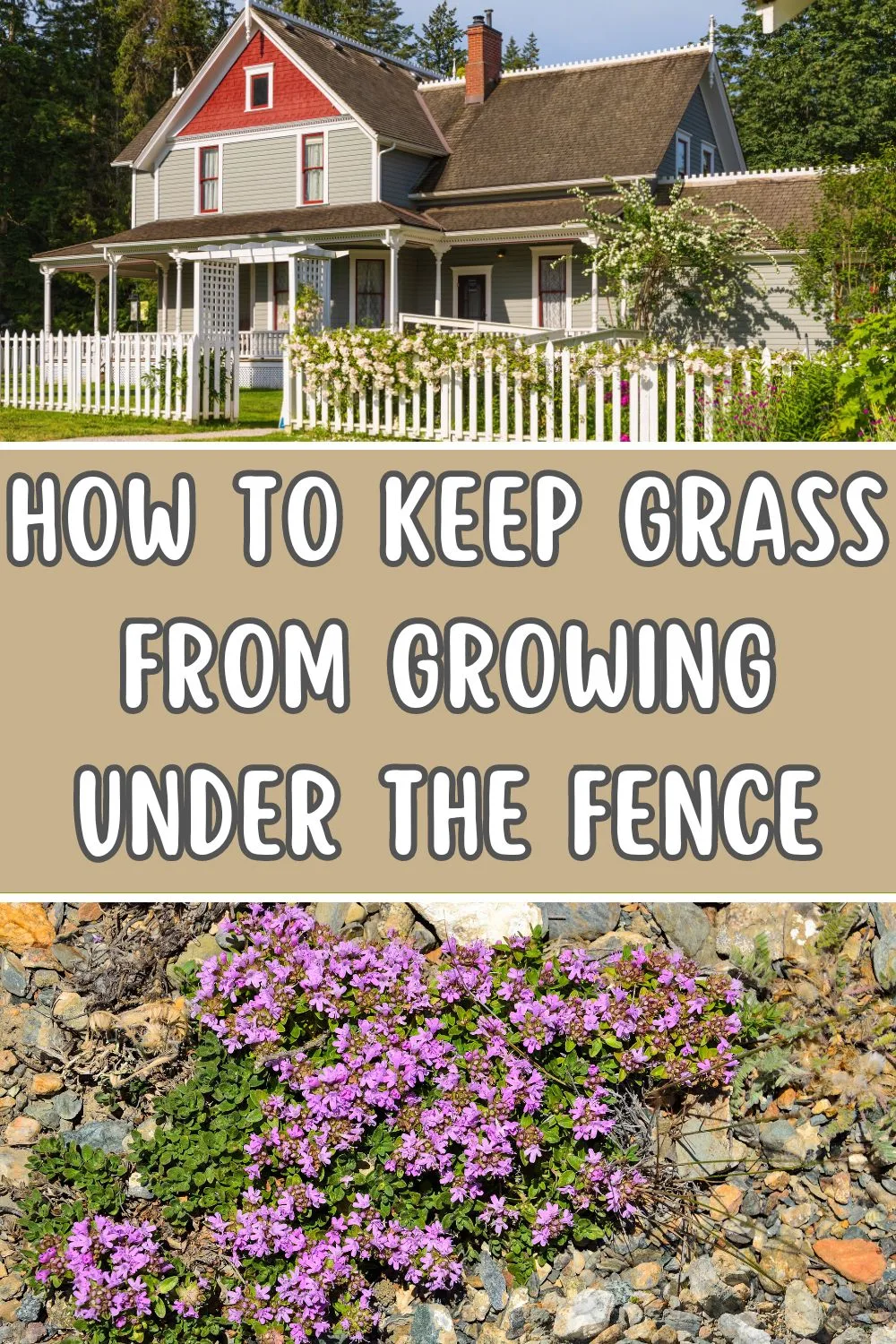I recently moved into a new house with a wonderful, fully fenced-in backyard. The downside? Keeping that fence line clean! Grass and other weeds grow up from under the fence and creep into my yard from the neighboring properties. The mower can only get so close, and it’s difficult to string trim along the fence without wearing down the string or damaging the fence. I’ve found myself wondering how to keep grass from growing under the fence so I don’t have to worry about trimming it at all. Sound familiar? I know I’m not alone in this frustration!

The good news is that there are several clever ways to prevent grass growing under a fence with minimal ongoing maintenance. Each of these options will take some effort up front, but that initial investment will free up lots of time for summer fun in years to come!
How to Keep Grass from Growing Under the Fence
All three of the following methods work by forming a weed barrier under and alongside the fence, with the difference being the materials used. The best one for you mostly depends on personal preference and perhaps access to materials.
To make these budget-friendly, look for free resources. Maybe you have a pile of bricks or pavers lying around that you could use to create a mow strip. Local buy-nothing groups (often on Facebook) can be great places to find free materials, and you can ask similar plant swap groups, neighbors, family, or friends for divisions of groundcovers if you’d like to go that route. For wood mulch, your town might have a wood chip dump site where you can scoop some up for free or look up ChipDrop to have a load delivered.
Lay mulch

The first method is to lay mulch under the fence. Start by marking a straight line three to five inches out from the base of the fence. Use flags or stakes as markers, placing one about every five feet. If your property extends on both sides of the fence, repeat this on the other side as well. Then, dig up all of the grass, creating a four-inch-deep trench extending from your marked line to under the fence (or to the line on the other side of the fence).
Line the border with landscape edging to prevent grass from growing under the fence again, and lay landscape fabric along the bottom, folding or trimming it to fit. If you would rather not lay plastic on the ground, use cardboard or a thick layer of newspaper instead of the landscape fabric.
Finally, fill the trench with mulch. Use wood chips, bark mulch, or another light mulch to avoid having stones go flying when you mow or string trim. If you prefer the look of pea gravel, make sure your landscape edging extends above the gravel so the mower or string trimmer doesn’t hit the gravel.
Create a mow strip

Alternatively, you can create a mow strip that lets you mow right up to the edge of the lawn near the fence. The easiest option might be to purchase and lay down recycled rubber edging strips, but these can have a tacky appearance and may not be as durable. Or, you can use bricks or pavers to create a barrier under the fence, much like with the mulch idea above.
Instead of digging three to five inches from the fence, measure the length of a brick or paver and mark that as the width of your trench under the fence. Dig as deep as your bricks or pavers are tall, ensuring the trench’s bottom is level. You can also dig a bit deeper and add a layer of sand to help level the bricks or pavers. Tap them snugly into place, then fill any gaps with soil or more sand to keep them from shifting around.
When you mow, you can roll the outside wheels of your mower on the bricks to ensure you mow all the way up to the edge of the grass. Keep in mind that you may have to occasionally pull weeds that creep between the bricks or spray them with vinegar mixed with a squirt of dish soap.
Plant groundcover

More plants? Yes, please! You can always replace the plants you don’t want with plants you do want. A dense, low-growing ground cover can keep your fence line looking tidy.
Again, you first have to get rid of the grass. You can do this by digging it out, as with the previous two methods, or by cutting it as low as possible and smothering it with overlapping cardboard or thick layers of newspaper. Then, cut holes in the cardboard or newspaper to plant each plant. You might want to add a layer of wood mulch to keep things tidy until the groundcover fills the gaps.
Creeping thyme (Thymus spp.) is a popular low-growing groundcover, or you can opt for something a bit taller, like liriope. Make sure to use Liriope muscari, not L. spicata, which can become weedy and invasive. Alternatively, choose a native groundcover, like wild ginger (Asarum canadense).
I don’t know about you, but I think I have a new landscaping project in my near future! That weedy fence line is going to look terrific when I’m done with it. Which method will you choose?

Serena Manickam is a freelance editor and writer and sustainable market gardener in rural Virginia. She holds a BA in environmental science and runs Fairydiddle Farm, a small market garden in which she grows no-spray produce and herbs to sell at a local farmer’s market.

